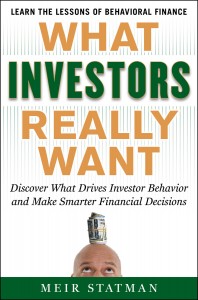Guest post: “Personalized Risk Management Planning–A Great New Business Opportunity”
Risk management is one of Mike Carpenter’s passions, as I quickly realized when I met him. His guest post discusses how risk management planning offers opportunities for financial advisors and others who wish to grow their businesses.
Personalized Risk Management Planning
– A Great New Business Opportunity
By Michael T. Carpenter
Financial advisors, wealth managers, and asset management firms can attract more assets and grow their business more easily by meeting the enormous unmet need for user-friendly, nontechnical, personal risk management planning.
Everyone’s Worried About Risk
“Risk” is THE word of the day. It’s on everyone’s mind. Client-centered, personalized risk management planning is a massive unmet need. Increasing concerns about risk pervades all aspects of our lives. As we’ve recently and so tragically seen in Japan, we can’t even count on the powerful forces of the earth and oceans not to reach out and surprise us with devastating consequences.
Today the entire world seems to be an unguided missile rocketing off into the future with more speed than control. Things that aren’t supposed to happen are happening more and more frequently. These increasing uncertainties and uncomfortable feelings of the risks controlling us rather than us controlling them, have led to increased anxieties, fears, and even more concerns about risk. This unsettling environment presents both an enormous challenge and a wonderful opportunity for those of us in the investment business to help investors better understand and manage risk. However, capitalizing on it requires we look at our business, at risk, and risk management in a new way, and offer a more holistic, user friendly, non technical (less quantitative) and more practical solution.
Knowledge, Understanding, and Preparation Are the Solution
The key to converting investor concerns, anxieties and fears about uncertainty and risk from business frustrations and impediments into powerful business building forces is to follow through on the observation made by thought leader Ralph Waldo Emerson. Over 150 years ago he stated, “Knowledge is that antidote to fear.” The power of his insight is the simple fact that risks we’ve identified, thoroughly understand, and are fully prepared for cannot harm us, and as a result carry much less anxiety. Better identification, knowledge and understanding of risks, and how to plan for and manage them more effectively, in both our clients’ minds and their portfolios is the answer. The big challenge for most investors is that the vast majority of them don’t really understand the true nature of risk or how to manage it effectively. That critical understanding is the key first step to minimizing their anxiety, fear, and emotional decision making and successfully executing risk management planning at the portfolio level.
Meet an Enormous Unmet Need
Who can individual investors seek out to help them identify, understand, more effectively plan for and manage the many risks they face in our increasingly less certain world? Who can help them identify, prioritize and address the risks they’re most worried about and those they should be concerned with but aren’t? Who can help them determine which risks to totally avoid, which risks to accept and manage, and the risks they can accept outright, while also helping them make necessary adjustments over time?
Right now the answer to that question is “NO ONE.” Insurance providers can be very helpful in providing casualty and life insurance solutions. However insurance addresses only a few of the many risks (both financial and non financial) investors face.
A 6-Step Implementation Process
Of course many people, including your clients, have financial plans. But how many have personal risk management plans? Doesn’t living and investing successfully in the most rapidly changing period in human history require both? The comprehensive identification and assessment of the risk faced be each client, very early in the planning process, makes risk management planning, investment policy, asset allocation, and portfolio design easier and more effective.
The heart of this change is to insert a thorough personal risk identification and analysis session into the beginning of your client fact-finding and discovery process. The steps go in this order:
1. Discussion. This is not a brief, simple risk quiz or a cursory questionnaire. This is a detailed, two-way interview and identification by investors of the risks that concern them now and in the future.
2. Follow-up. Continue the discussion of the specific risks of greatest concern of each client, as well as the risks that you know clients will likely face and should plan for, even if those risks are not mentioned initially by the client.
3. Prioritization. Help the client to prioritize those risks based on the potential personal impact, even if the likelihood of the risk(s) occurring is low. Also, agree on risk management strategies for each risk.
4. Agreement. Gain agreement about the importance of integrating those risks and risk management strategies into the financial planning & asset allocation process
5. Document. Create a written & signed personalized risk management plan
6.Monitoring. Establishing a regular, formal risk management plan review process, to be integrated into your normal investment or financial plan review process.
Give Yourself a Competitive Advantage
Offering comprehensive, personalized, user friendly, non-technical risk management education and planning, alongside financial and investment planning will meet a critical need. It will also convert the uncertainties and anxieties created by the accelerating pace of worldwide change into powerful business building forces, instead of the business impediments they are now.
That enormous and growing unmet need represents a wonderful opportunity for investment sponsors, wealth managers, and financial advisors to enhance their services and their business. Forty years ago comprehensive financial planning was in its infancy, now it’s mainstream and advisors who don’t provide it are considered unethical. Today comprehensive risk management planning is where financial planning was in the 1970s. The only difference is that the accelerating pace of worldwide change, and the increased uncertainty, risks, and opportunities it generates insures that strategic risk management planning will become mainstream much more quickly.
Offering strategic risk management planning before it becomes mainstream will provide you an attractive and powerful competitive advantage.
Michael T. Carpenter is author of the advisor and investor book The “Risk-Wise” Investor- How To Better Understand and Manage Risk, published globally by John Wiley & Sons, Inc. ( www.RiskWiseInvestor.com ). He consults, conducts presentations, workshops and seminars on risk management for boards, business people, investment management firms, financial advisors, and their clients, and can be reached at MikeCarpenter@MCarpenterAssoc.com.







